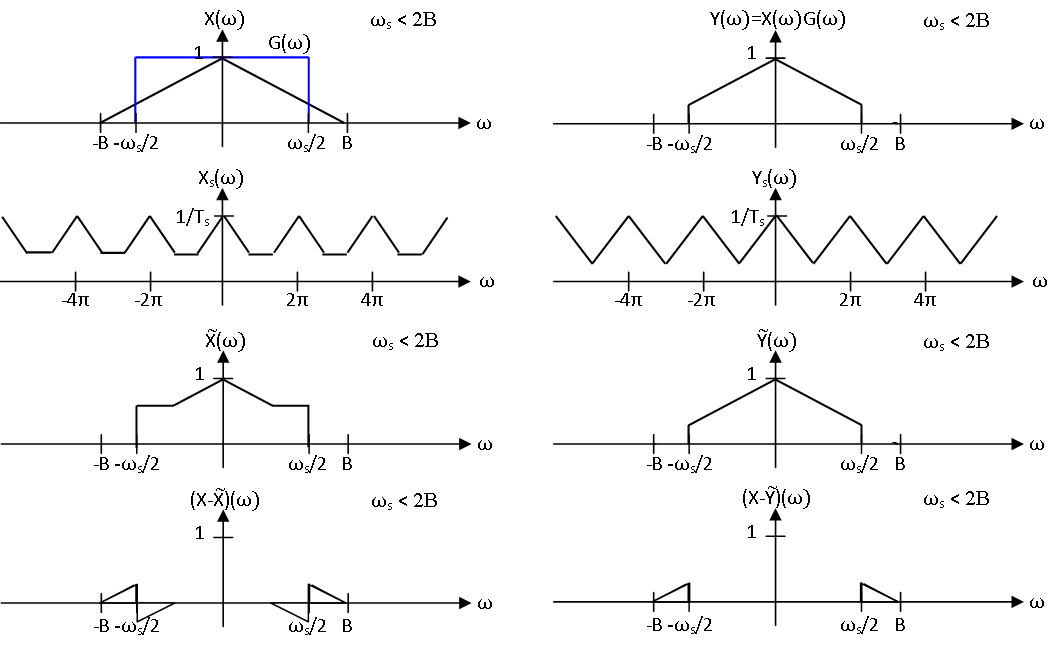| << Chapter < Page | Chapter >> Page > |
It has been shown that a bandlimited signal can be perfectly reconstructed from its samples at a rate . However, it is not always practically possible to produce sufficiently high sampling rates or to ensure that the input is bandlimited in real situations. Aliasing, which manifests itself as a difference in shape between the periods of the samples signal spectrum and the original spectrum, would occur without any further measures to correct this. Thus, it often becomes necessary to filter out signal energy at frequencies above in order to avoid the detrimental effects of aliasing. This is the role of the anti-aliasing filter, a lowpass filter applied before sampling to ensure that the signal is bandlimited or at least nearly so.
Aliasing can occur when a signal with energy at frequencies other that is sampled at rate . Thus, when sampling below the Nyquist frequency, it is desirable to remove as much signal energy outside the frequency range as possible while keeping as much signal energy in the frequency range as possible. This suggests that the ideal lowpass filter with cutoff frequency would be the optimal anti-aliasing filter to apply before sampling. While this is true, the ideal lowpass filter can only be approximated in real situations.
In order to demonstrate the importance of anti-aliasing filters, consider the calculation of the error energy between the original signal and its Whittaker-Shannon reconstruction from its samples taken with and without the use of an anti-aliasing filter. Let be the original signal and be the anti-alias filtered signal where is the ideal lowpass filter with cutoff frequency . It is easy to show that the reconstructed spectrum using no anti-aliasing filter is given by
Thus, the reconstruction error spectrum for this case is
Similarly, the reconstructed spectrum using the ideal lowpass anti-aliasing filter is given by
Thus, the reconstruction error spectrum for this case is
Hence, by Parseval's theorem, it follows that . Also note that the spectrum of is identical to that of the original signal at frequencies This is graphically shown in [link] .

As can be seen, anti-aliasing filters ensure that the signal is bandlimited, or at least nearly so. The optimal anti-aliasing filter would be the ideal lowpass filter with cutoff frequency at , which would ensure that the original signal spectrum and the reconstructed signal spectrum are equal on the interval . However, the ideal lowpass filter is not possible to implement in practice, and approximations must be accepted instead. Anti-aliasing filters are an important component of systems that implement discrete time processing of continuous time signals, as will be shown in the subsequent module.

Notification Switch
Would you like to follow the 'Signals and systems' conversation and receive update notifications?